The Data
As all the testing in this round-up was performed with the exact same equipment, using the exact same methods I have decided to keep each radiators page uncluttered by posting our testing methodology, test set-ups and equipment used in a single location. To see exactly how the tests were carried out, details of the test set ups and equipment used, please head back to the RRU Test Setup page.
Restriction Test
It’s generally agreed that radiators are one of, if not the least restrictive components in the water cooling loop. There are some exceptions however, so this must still be verified through testing:
The above photo is for referencing the restriction test bench The XE is not loaded so please disregard the data in the picture as it does not relate to the its test results.
Here is the raw data at the tested flow rates, displaying the measured Differential Pressure across the radiator as flow rate was increased.
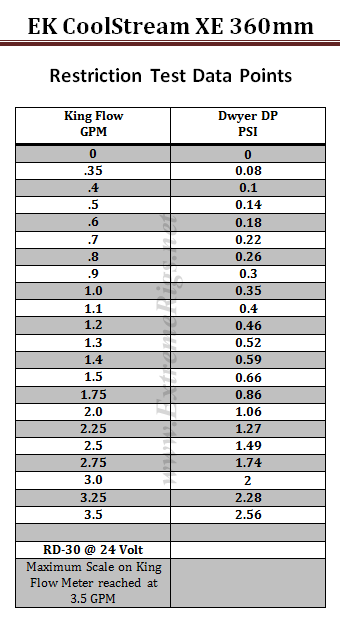 The table numbers indicate that the XE 360 is a medium restriction radiator. However numbers in isolation can only tell half the story. By plotting against other components it more easily shows the whole story.
The table numbers indicate that the XE 360 is a medium restriction radiator. However numbers in isolation can only tell half the story. By plotting against other components it more easily shows the whole story.
I have decided to use a HeatKiller 3.0 CPU block as the reference in these plots for two reasons. Firstly there is no chance of the plot being cluttered by curves overlapping and secondly it gives a reference point against a fairly common loop component of average restriction.
As with all the radiator restriction plots I have limited the maximum flow rate displayed to 2.0 GPM as I suspect there are very few systems that operate above 2.0 GPM. For more information on how to read a restriction plot check out our guide.
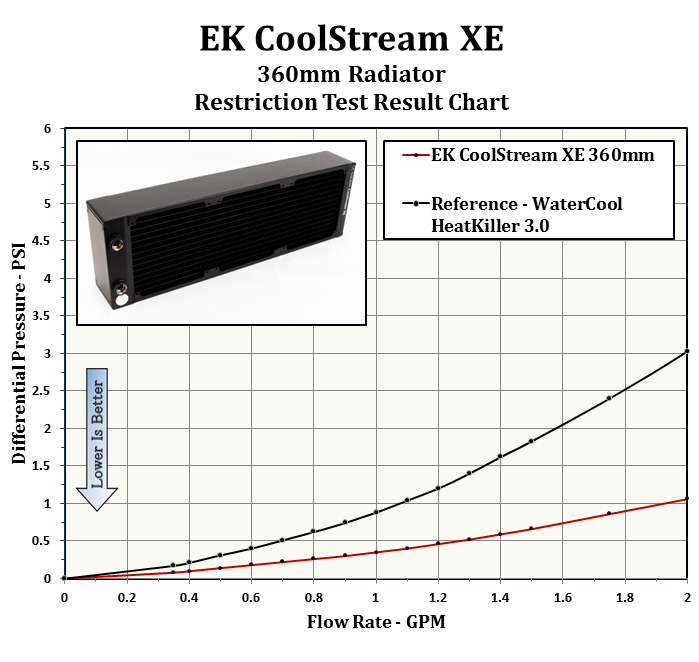
This plot confirms the XE as a low restriction loop component. lets see how if fares against the other radiators in the test group.
The next three plots show the XE’s restriction level relative to other radiators in the test group. Previously I have only shown just the 1.0 gpm plot, but I have now decided to show 3 different flow rates for you to see how the rad’s restriction levels compare against each other at different flow rates.
From these plots I think it a fair assessment to call the XE360 a medium restriction radiator. While higher than some it’s not at a level that needs to be worried about.
Onwards to Thermal Performance!








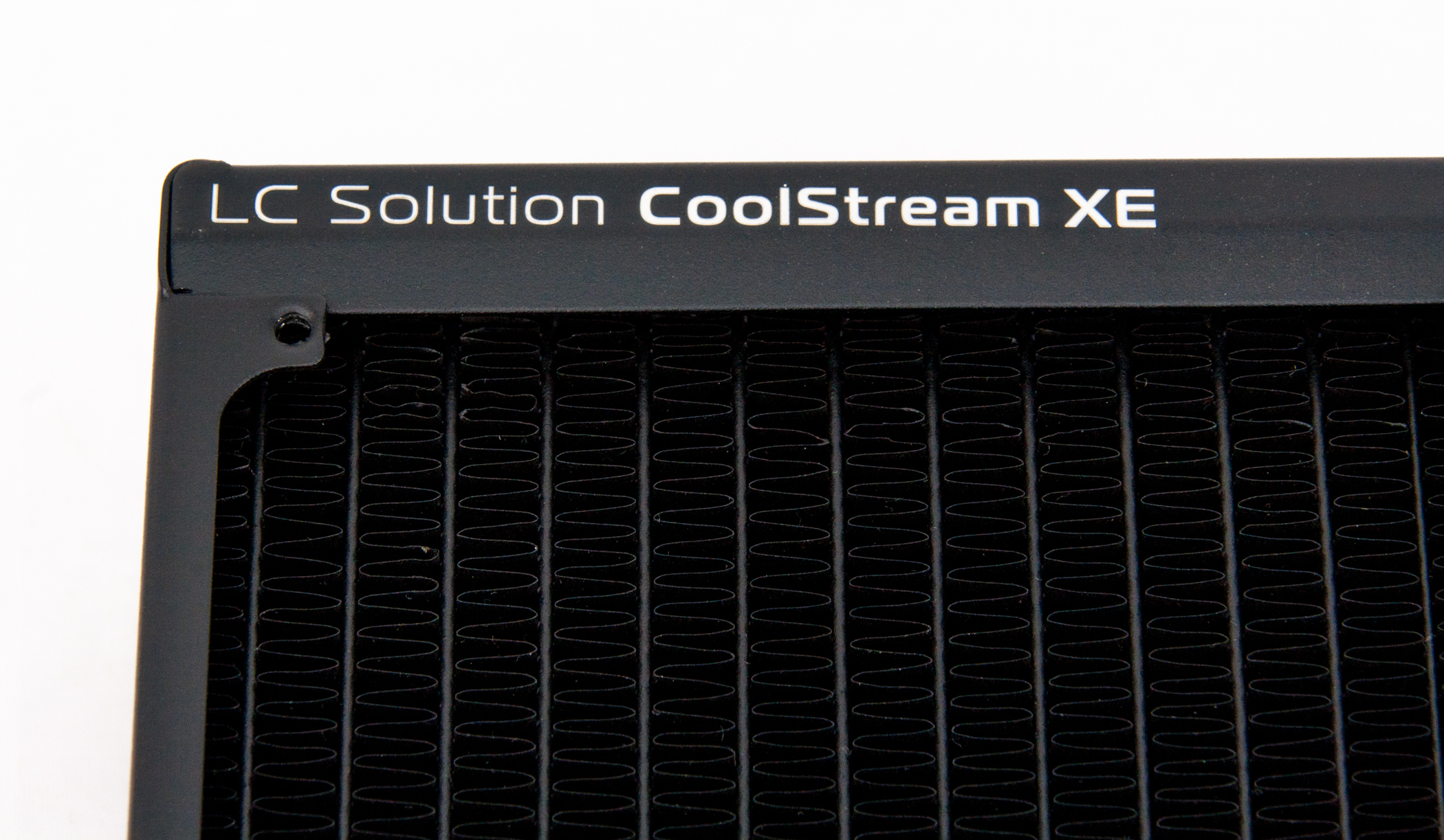
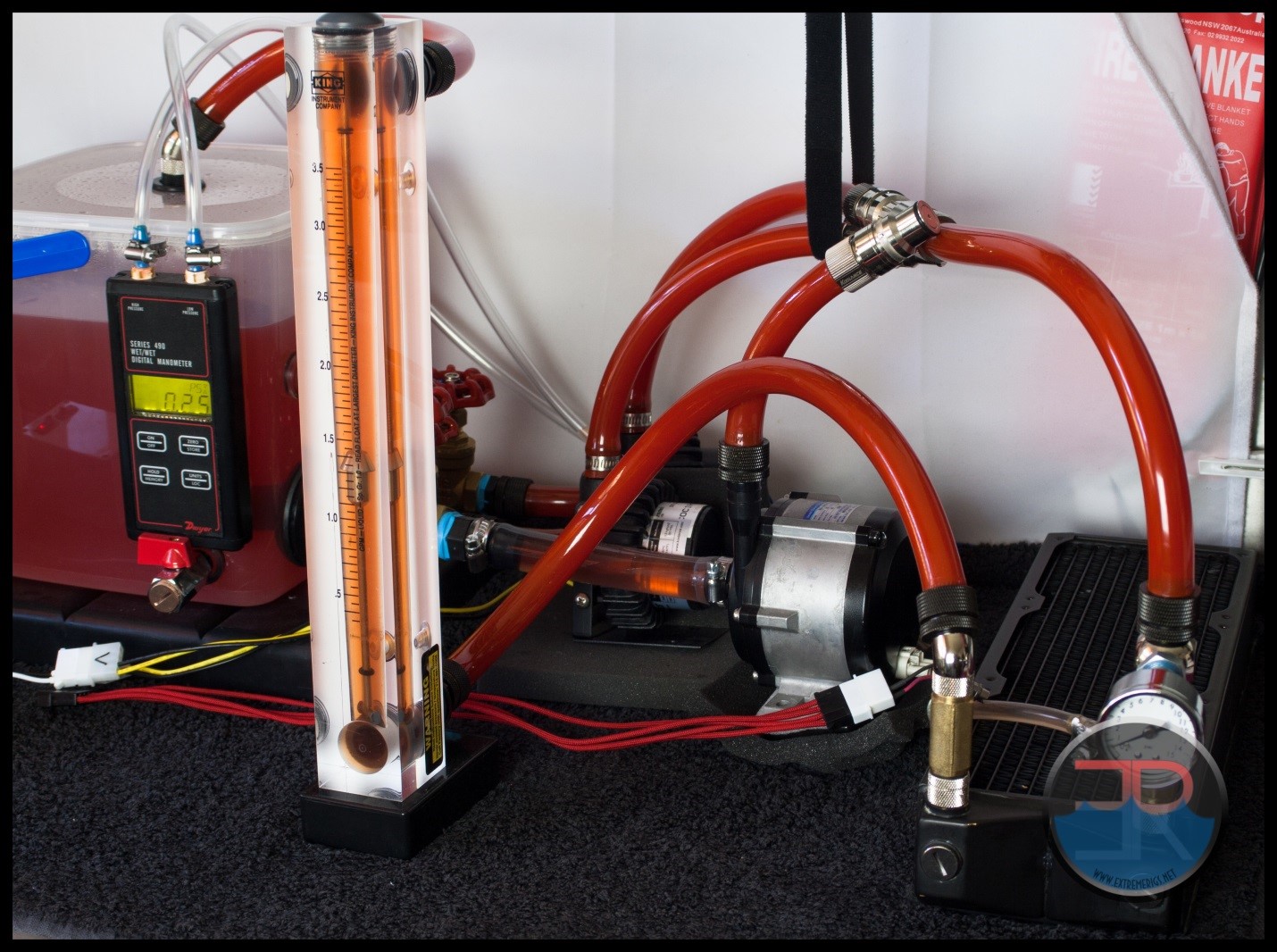
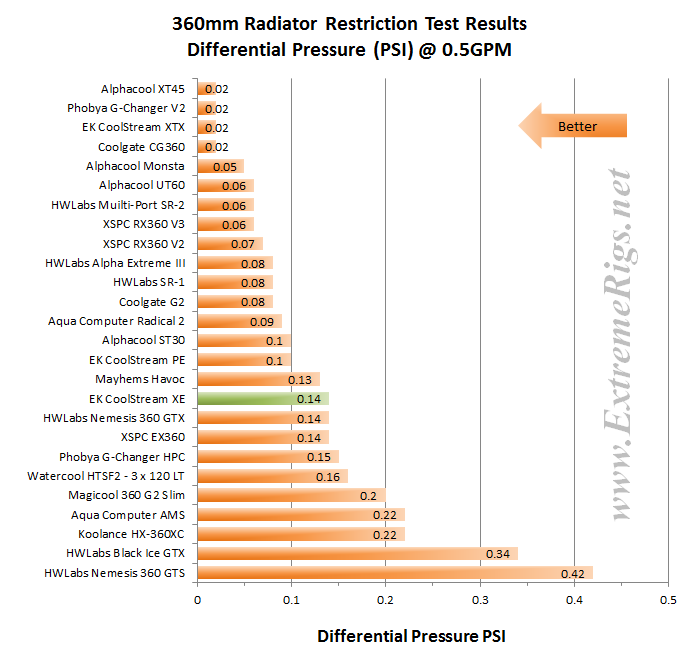
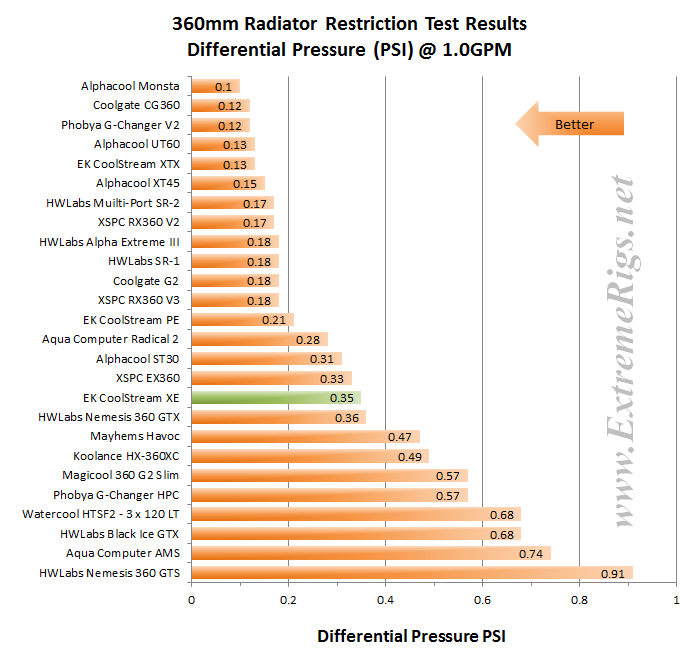
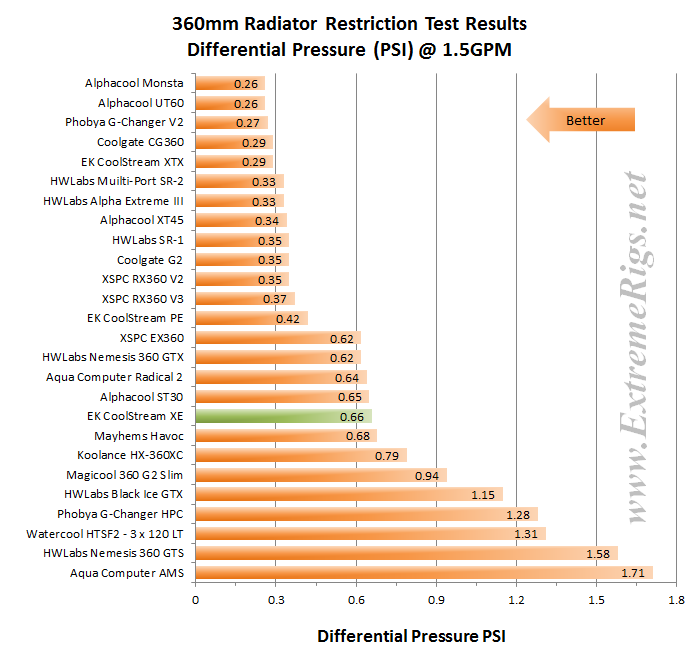



Another great review of a great rad. Excellent work Fast Fate and EK.
Will have a couple of these on their way as soon as I can.
On your analysis page when comparing the average GPM @ 750/1300/1850 P/P your graph for this review differs from say the coolgate G2 review analysis numbers. Power dissipated on the G2 review page at AVE GPM 1850 P/P is 497.7 and in this review it shows the G2 @ 461. This discrepancy is across all radiators and fan speeds in your group A reviews, the power dissipated is much lower in this review.
I know you changed your temp reading set-up to get better accuracy but I never found anything referencing the change in Power dissipated due to that. Its confusing, could you please explain why the numbers changed.
BTY, always great reviews…..thank you!!
Good catch! Yes this is because for Group A we were using averaged power dissipation numbers across all of Group A. After publishing Group A and continuing analyzing numbers with Group B we found that repeatability was increased by using calculated power dissipation from each run rather than the average over all tests. Therefore all later numbers are processed using this method. Soon we will be going back and editing all the results to be consistent in the methodology
[…] EK CoolStream XE 360mm Radiator Review […]
[…] with the screws provided with the XE (which we reviewed last month) the short screws measured in at 6.5mm, just slightly longer than the 5mm as listed by […]
Thanks for the review.
This seems like close to the “ultimate” radiator it would seem.
Basically, this thing needs 2 things as you’ve noted:
– Screw protectors (this I think is a big oversight and would not be hard to integrate at all)
– A fill/bleed at the end (this I think is less important)
Otherwise, this is basically the ultimate radiator. I suspect that an 85mm version thick “Monster” variant of this would be able to outperform even the HWLabs GTX Black Ice.
Do you think that the louvered fins and higher tube count (14) are responsible for this radiator’s all around good performance?
Not sure if my commented posted earlier, but this is a repost.
It would seem that the ultimate radiator then would be a thicker variant of the XE 360mm. It’s interesting to note that this fan, despite it’s medium fin density, keeps up with all other radiators across the board.
Why?
– Perhaps the louvered single fin design is superior?
– I also note that it has 14 tubes, rather than the typical 12 tubes.
I’d be interested to hear your thoughts on that.
I would guess that a “Monster” radiator thickness (say 85mm or perhaps even 100mm) would be probably the ultimate radiator, especially if they could fit more tubes in.
I hope that in the future, EK will add screw protectors. That I think is a big oversight.
Anyways, thanks for the review.
[…] So EK have confirmed that dents will not turn into leaks – so if you have dents then feel free to carry on with your life. I am confused about the statement that only the 480 radiator is affected given that we’ve seen dents on other sizes. Still there is an option to RMA if you’re at all concerned. Hopefully this is the last we see of the issue because the XE is a great performing radiator! […]
[…] reviewed the 360mm version for the Extreme Rigs Rad Round Up 2015, so if the 360mm size is more your flavor be sure to check […]
Comments are closed.